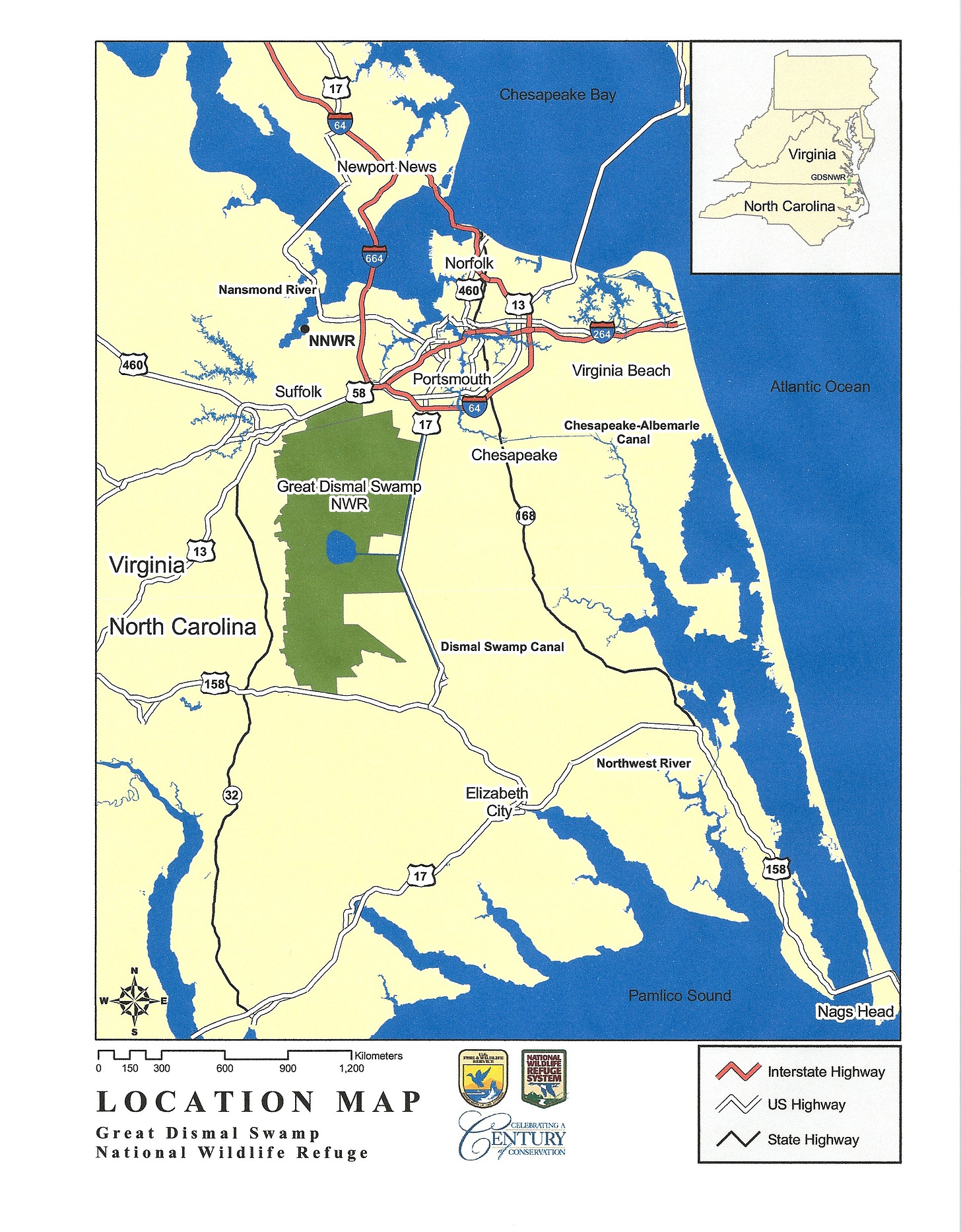A family of self-emancipators depicted hiding in the Great Dismal Swamp in Thomas Moran’s oil painting Slave Hunt, from about 1864. (Virginia Museum of History and Culture)
While southeastern Virginia remains mostly unaffected by Donald Trump’s anti-American attempts to sabotage national memory, Tidewater’s twin local daily newspapers have spotlighted The Self-Emancipator’s historical cause: esteem for the under-recognized multitudes of enterprising slavery escapees who forced slavery’s fate onto the Civil War political agenda.
An April 11 editorial in both the Norfolk Virginian-Pilot and Newport News Daily Press supported the effort to designate the Great Dismal Swamp, now part of a national wildlife refuge, as a National Heritage Area. The editorial made a point of linking that prospect to national memory of self-emancipation—and to Fort Monroe at Point Comfort:
A similarly promising idea is underway to designate Fort Monroe in Hampton and several sites in Maryland as the Chesapeake National Recreation Area, drawing more public attention and congressional funding to efforts to protect the Chesapeake Bay and tell its rich history.
The designation would help raise the profile of Fort Monroe, whose historic roles as the first arrival point of enslaved Africans and as the site of a pivotal moment of self-emancipation at the start of the Civil War deserve broader appreciation and understanding.
The editorial ends by declaring the importance of protecting these assets not only for the country, but for the world.
The Great Dismal Swamp straddles the line between Virginia and North Carolina. (Just below and slightly to the right of the letter s in Newport News is Point Comfort, containing Fort Monroe with Freedom’s Fortress—and overlooking Hampton Roads harbor, the lower Chesapeake Bay, and four centuries of national memory that Donald Trump seeks to sabotage.)
Encyclopedia Virginia says that in antebellum times, the swamp “entered popular consciousness as a place of refuge from slavery through works such as Henry Wadsworth Longfellow’s poem ‘The Slave in the Dismal Swamp’ and Harriet Beecher Stowe’s 1856 book Dred: A Tale of the Great Dismal Swamp.” It calls the swamp a “mythical place of enslaved resistance and rebellion” where “individuals or groups of enslaved people self-emancipated and sought refuge in inhospitable terrain.”
The National Park Service calls it “a vast mire teeming with predators” that nevertheless promised slavery escapees “both a better life and—thanks to its harsh conditions and fearsome reputation—safety from those seeking to return them to slavery.”
Slavery escapees who lived free in such circumstances were called maroons. Smithsonian Magazine says that from antebellum days through the Civil War, the Great Dismal Swamp contained the country’s largest maroon community. The article quotes a historical archaeologist explaining that for those Americans, there “were hardships and deprivations, for sure. But no overseer was going to whip them here. No one was going to work them in a cotton field from sunup to sundown, or sell their spouses and children. They were free. They had emancipated themselves.”
But don’t tell Donald Trump.
Among his attacks on national memory, consider his executive order with the ludicrous name “Restoring Truth and Sanity to American History.” It begins by condemning what the order itself seeks to perpetrate: “a concerted and widespread effort to rewrite our nation’s history, replacing objective facts with a distorted narrative driven by ideology rather than truth.”
The order levels accusations of “corrosive ideology,” “improper ideology,” “improper partisan ideology,” and one that’s especially ironical concerning slavery’s quarter millennium, 1619 to the Civil War: “divisive, race-centered ideology.”
Race-centered? Here’s a passage that the president’s culture goons removed from a National Park Service web page, but restored under public pressure from Americans who esteem the self-emancipation movement:
The Underground Railroad—the resistance to enslavement through escape and flight, through the end of the Civil War—refers to the efforts of enslaved African Americans to gain their freedom by escaping bondage. Wherever slavery existed, there were efforts to escape, at first to maroon communities in remote or rugged terrain on the edge of settled areas and eventually across state and international borders. These acts of self-emancipation labeled slaves as “fugitives,” “escapees,” or “runaways,” but in retrospect “freedom seeker” is a more accurate description. Many freedom seekers began their journey unaided and many completed their self-emancipation without assistance, but each subsequent decade in which slavery was legal in the United States, there was an increase in active efforts to assist escape.
The “urge to police the past,” writes David Remnick, editor of The New Yorker since 1998, “is hardly unique to the Trump Administration. It is the reflexive obsession of autocrats everywhere. … Trump’s executive order on history does not repeat precisely the tactics of Putin or Xi. But it rhymes.”
With President Trump imagining his self-glorification prospects for 2026—the semiquincentennial of the Declaration of Independence—he will likely target Virginia too with his America-betraying tactics. But I like what the Frederick Douglass biographer David Blight wrote in the the New York Times: “the administration has started a war it cannot win.”






Great article! I'd only otherwise known that maroon communities were formed on the relatively rare spots deep into the inaccessible areas of the swamp where solid ground was a few inches above high tide level (plus, where drinkable water was nearby). Four hundred years of aspiring to live free.
I have a feeling that Trump, relying on his limited knowledge of his "heritage" as a real estate developer and landlord-gouger, will, if he gets his mitts on the Great Dismal Swamp, characterize enslavers as heroic, venturing into Joseph Conrad-like jungle to reclaim their property, i.e., freedom-seeking maroons.
Maybe the National Heritage Area idea should be slow-walked until Trump is in his "third term"?
Good article. It describes an interesting (and inspiring) chapter in history that we should remember.